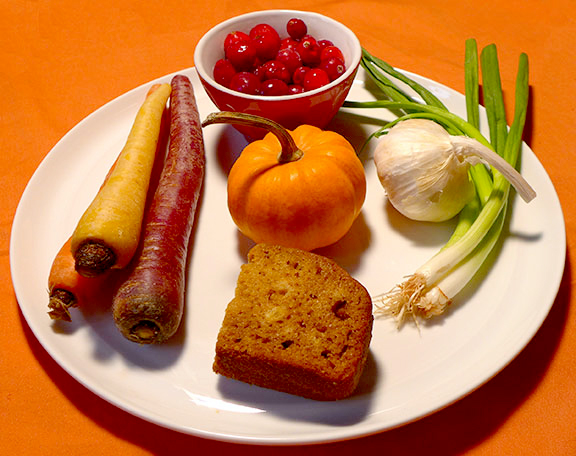As I continue to work on my Passover cookbook, I am struck by certain parallels between Passover and Thanksgiving. Just as Thanksgiving is the most popular holiday enjoyed in the United States by Americans of all backgrounds (a billion-dollar industry with thousands of cookbooks around one food holiday alone!), Passover is the most loved of all holidays in the Jewish calendar celebrated by Jews from all streams of Judaism. Like Thanksgiving, Passover takes place with family and friends of all generations sitting around a big table (or two) at home, outside of any house of worship. For Thanksgiving, turkey, cranberry sauce, stuffing, and sweet potatoes have become the symbols of the holiday, while matzah, charoset, gefilte fish, chicken soup (with matzah balls), eggs, and either brisket or lamb have become synonymous with Passover here in the United States.
The message behind each occasion also has some striking resemblances. While there may be a bit of a debate these days about the true story behind how Thanksgiving came to be, the overall mood or feeling around this festivity has become one of inclusiveness, sharing, giving, and last but not least: gratefulness. As immigrants from all backgrounds we reflect (if only for a tiny moment between bites of sweet potato pie and savory stuffing) about being lucky to live in “America,” and for having those who are special to us around to share the meal and essentially “break bread.” It also has become a time to pause and think more locally about those of us who are poor, sick, or struggling in other ways, and as a result many volunteer their time to soup kitchens providing free Thanksgiving meals to those in need. While retelling the story of the Exodus from the Bible, we express gratefulness for our ancestors being released from slavery in Egypt, making their journey through the desert to Jerusalem, and for us surviving as a people time and time again. In my interviews of individuals from all over the world for my Passover cookbook, many have shared with me their stories of making a concerted effort to invite any Jews into their home for the Passover Seders so that they would not be alone and would have a place to eat and “break matzah” with others. (And we can’t forget about the custom of setting out a glass of wine and opening up the door for Elijah, the prophet and eternal guest.)
Some individuals and Jewish organizations have even taken up this opportunity to take aspects of the Passover Seder and weave them into their Thanksgiving meals. During these meals, mini Haggadot or prayer booklets are distributed at the table to discuss the topics of “Struggle, Freedom, and Gratitude” as a universal concept.
Maybe this is the time to create a new Seder plate for Thanksgiving,
one that would include various foods to represent the following principles:
STRUGGLE: leeks, scallions (slavery, abuse, poverty, sadness)
LUCK: head of garlic (protection against evil)
FREEDOM & SHARING: pumpkin bread (sweetness/”breaking bread” with others)
GRATEFULNESS: cranberries/cranberry sauce (sweet & sour taste representing balance)
INDIVIDUALITY & STRENGTH: multi-colored carrots (various cultures/building roots)
HOPE: pumpkin (growth)
QUESTION: What would you put on your Thanksgiving Seder plate?

